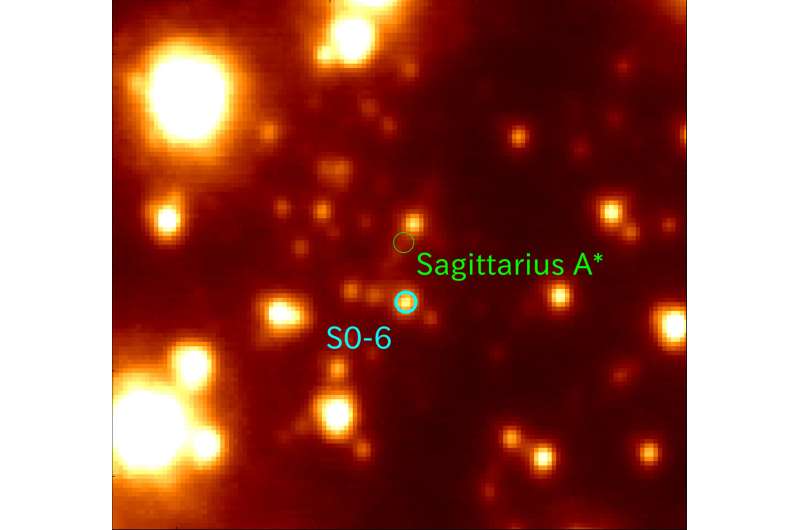December 9, 2023 report
This article has been reviewed according to Science X's editorial process and policies. Editors have highlighted the following attributes while ensuring the content's credibility:
fact-checked
trusted source
proofread
Saturday Citations: Extragalactic stars in the Milky Way, more biolinguistic evidence and couples coping with COVID

This week we look at migratory stars, communicative children and how to make the best cup of coffee, as well as examining some of the latest COVID advice.
Tourist identified
Stars orbiting the supermassive black hole at the center of the Milky Way galaxy—that's Sagittarius A* on its tax forms—couldn't have formed in such an intense gravitational environment; they had to form elsewhere and migrate toward Sag A*.
Now, researchers at the Miyagi University of Education have proposed that one particular star, S0-6, formed in a now-extinct dwarf galaxy absorbed by the Milky Way, comprising the first observation of an extragalactic stellar tourist in the galaxy.
Dwarf galaxies are small, composed of up to several billion stars, often orbiting larger, more populous galaxies. The Milky Way has about 20. The researchers estimate that S0-6 is 10 billion years old and in their study, determined that its chemical composition is similar to stars found in dwarf galaxies.
Children communicative
So Noam Chomsky's whole career has been spent piling up evidence that the structure of language is biologically established in the human brain and genetically inherited and that all humans share the same biolinguistic framework regardless of language differences.
Even hard-core prescriptivists these days are like, "Yeah, yeah, biolinguistics is probably right, but quit splitting infinitives anyway." Researchers at Georgia State University now propose that there is a genetically inherited, universal nonverbal communication system. They conducted an experiment with English-speaking children and Turkish-speaking children, ages three to 12.
The researchers asked them to use their hands to act out specific actions like "running into a house." The differences between the two languages mean that a Turkish speaker has to use two sentences, one entailing running and the other entering the house. But English speakers can communicate the action in a single sentence.
When children spoke and gestured at the same time, gestures followed the separate conventions of the two languages. But when children communicated the action nonverbally, their gestures were similar.
Grind wet
Coffee has been around so long that you'd think straining water through ground-up beans would have been perfected centuries ago, like finding the area of a triangle. But with the increasing granularity of scientific inquiry, scientists are now looking at coffee grinding at the level of electrons—specifically, the process of grinding coffee, which produces static electricity, causing ground coffee to clump and stick to the sides of the grinder.
Researchers at the University of Oregon report that moisture directly impacts the amount of charge that builds up during grinding, reducing static electricity and greatly affects the quality of the resulting coffee.
"Water not only reduces static electricity and therefore reduces mess as you're grinding, but it can also make a major impact on the intensity of the beverage and, potentially, the ability to access higher concentrations of favorable flavors," says Christopher Hendon, a computational materials chemist. The researchers note that it doesn't matter whether the moisture is added before grinding or if it already resides in the beans themselves.
Resilience cozy
The COVID pandemic and the resulting lockdowns and working from home had unexpected impacts on many couples. Researchers at Rutgers University examined behaviors that helped couples endure the effects of the pandemic by recruiting romantic couples from across the U.S., who completed weekly surveys of relationship characteristics and the impact of the pandemic on their personal lives from March to May of 2020.
They found that couples who exhibited resilience behaviors were most likely to have positive outcomes. These include increasing levels of support for partners, maintaining old routines, and creating new ones. The least effective approach for couples turned out to be using jokes and humor as a resilience method.
They note that some partners may have felt that jokes were an inappropriate response to the severity of the pandemic, but also that joking is probably not beneficial for reducing uncertainties in a romantic relationship.
© 2023 Science X Network





















